Yellowstone National Park is a recreation area of about 3,500 square miles on a volcanic site.
Yellowstone National Park is a recreation area of about 3,500 square miles on a volcanic site. Mainly in Wyoming, the park extends to parts of Montana and Idaho. Yellowstone has alpine rivers, lush forests, warm springs, and gushing hot springs, including the most famous, Old Faithful. It is also home to hundreds of species of animals, including bears, wolves, bison, algae, and antelope.
1. Old Faithful
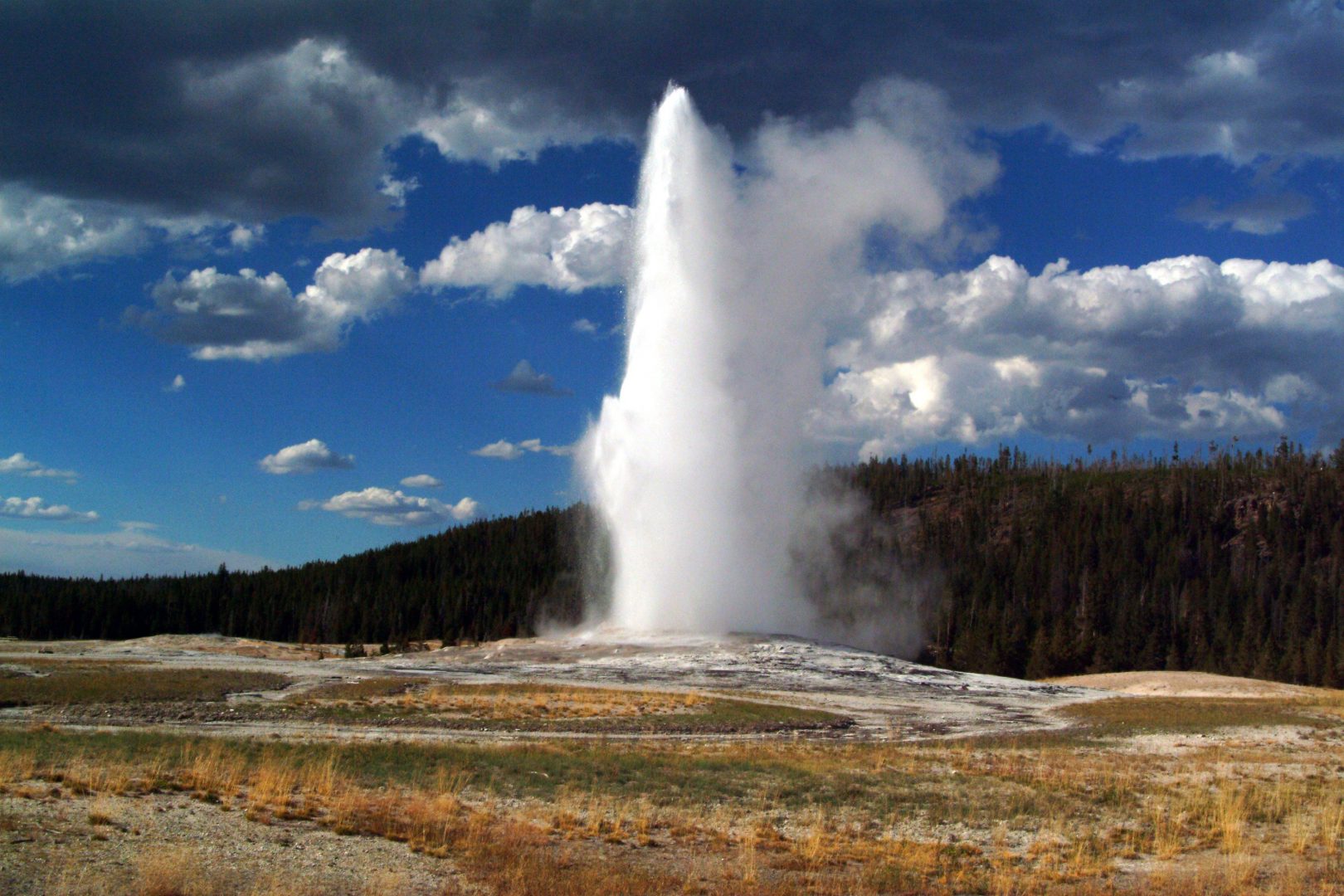
Old Faithful is a cone geyser located in Yellowstone National Park in Wyoming, United States. It was named in 1870 during the Washburn-Langford-Doane Expedition and was the first geyser in the park to receive a name. It is a highly predictable geothermal feature and has erupted every 44 minutes to two hours since 2000. The geyser and the nearby Old Faithful Inn are part of the Old Faithful Historic District.
2. Grand Prismatic Spring
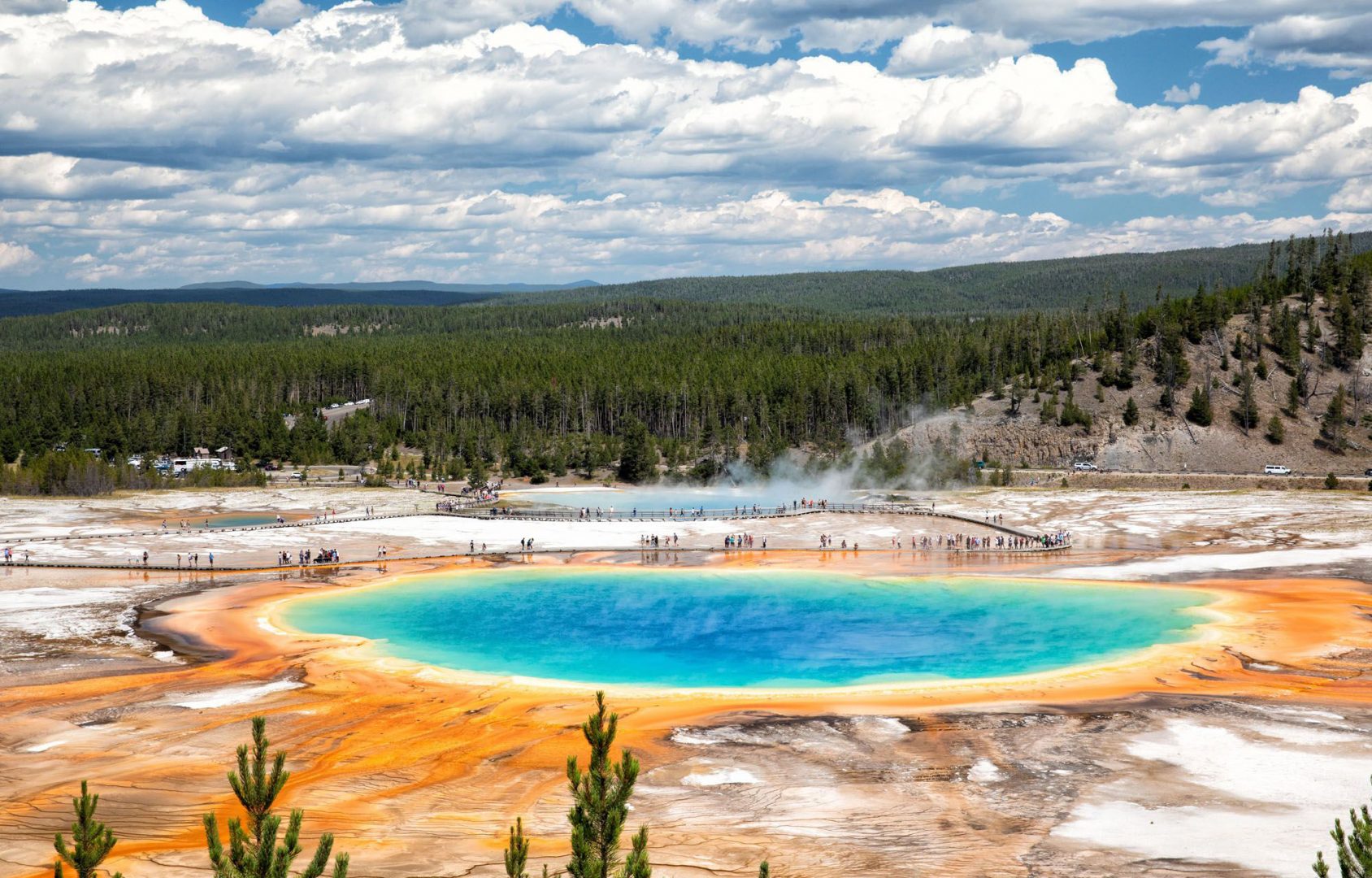
The Grand Prismatic Spring in Yellowstone National Park is the largest hot spring in the United States, and the third-largest in the world, after Frying Pan Lake in New Zealand and Boiling Lake in Dominica. It is located in the Midway Geyser Basin. Grand Prismatic Spring was noted by geologists working in the Hayden Geological Survey of 1871, and named by them for its striking coloration. Its colors match most of those seen in the rainbow dispersion of white light by an optical prism: red, orange, yellow, green, and blue.
3. Yellowstone Lake
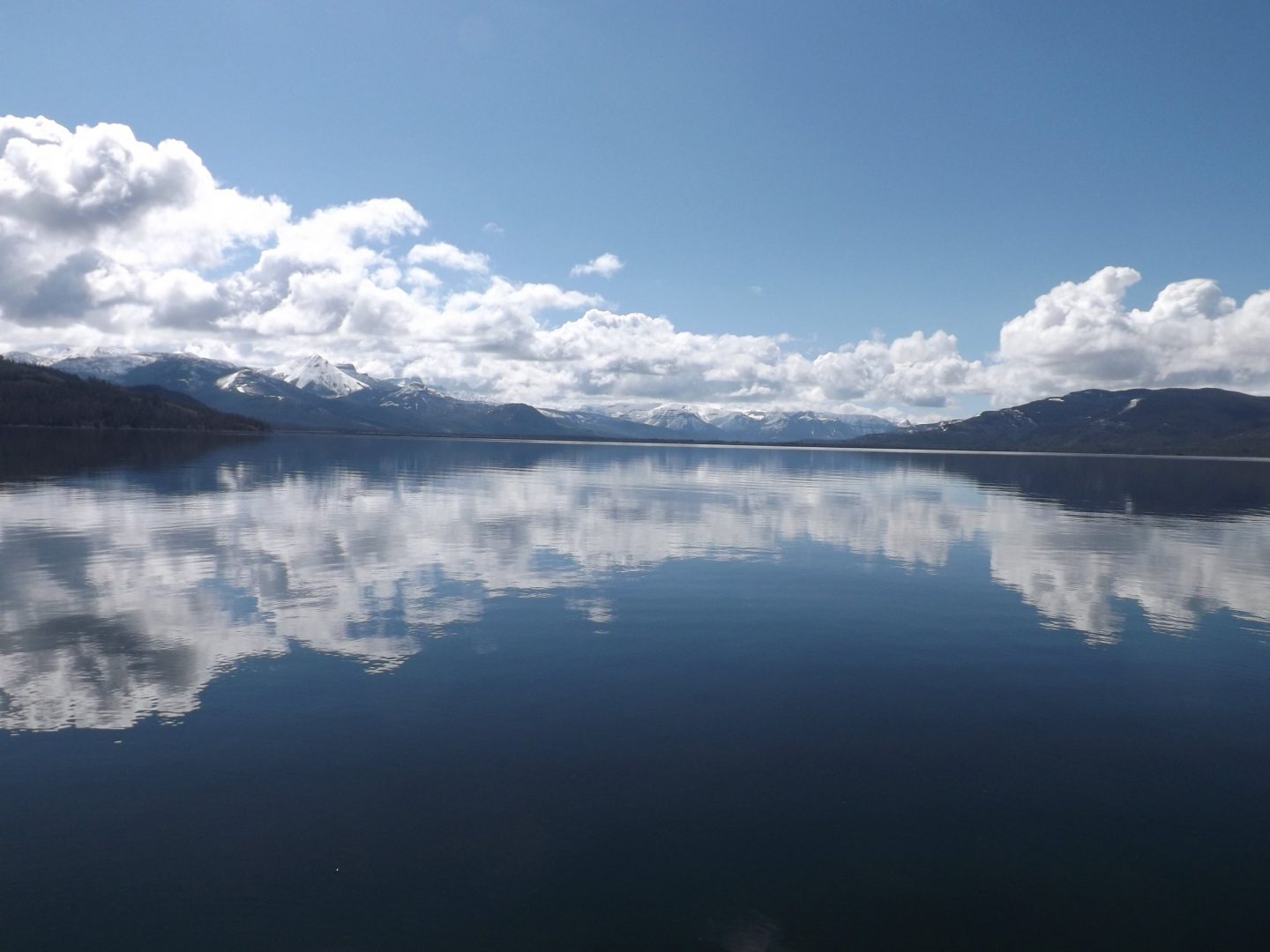
Yellowstone Lake is the largest body of water in Yellowstone National Park. The lake is 7,732 feet above sea level and covers 136 square miles with 110 miles of shoreline. While the average depth of the lake is 139 ft, its greatest depth is at least 394 ft. Yellowstone Lake is the largest freshwater lake above 7,000 ft in North America. In winter, ice nearly 3 ft thick covers much of the lake except where shallow water covers hot springs. The lake freezes over by early December and can remain frozen until late May or early June.
4. Mammoth Hot Springs
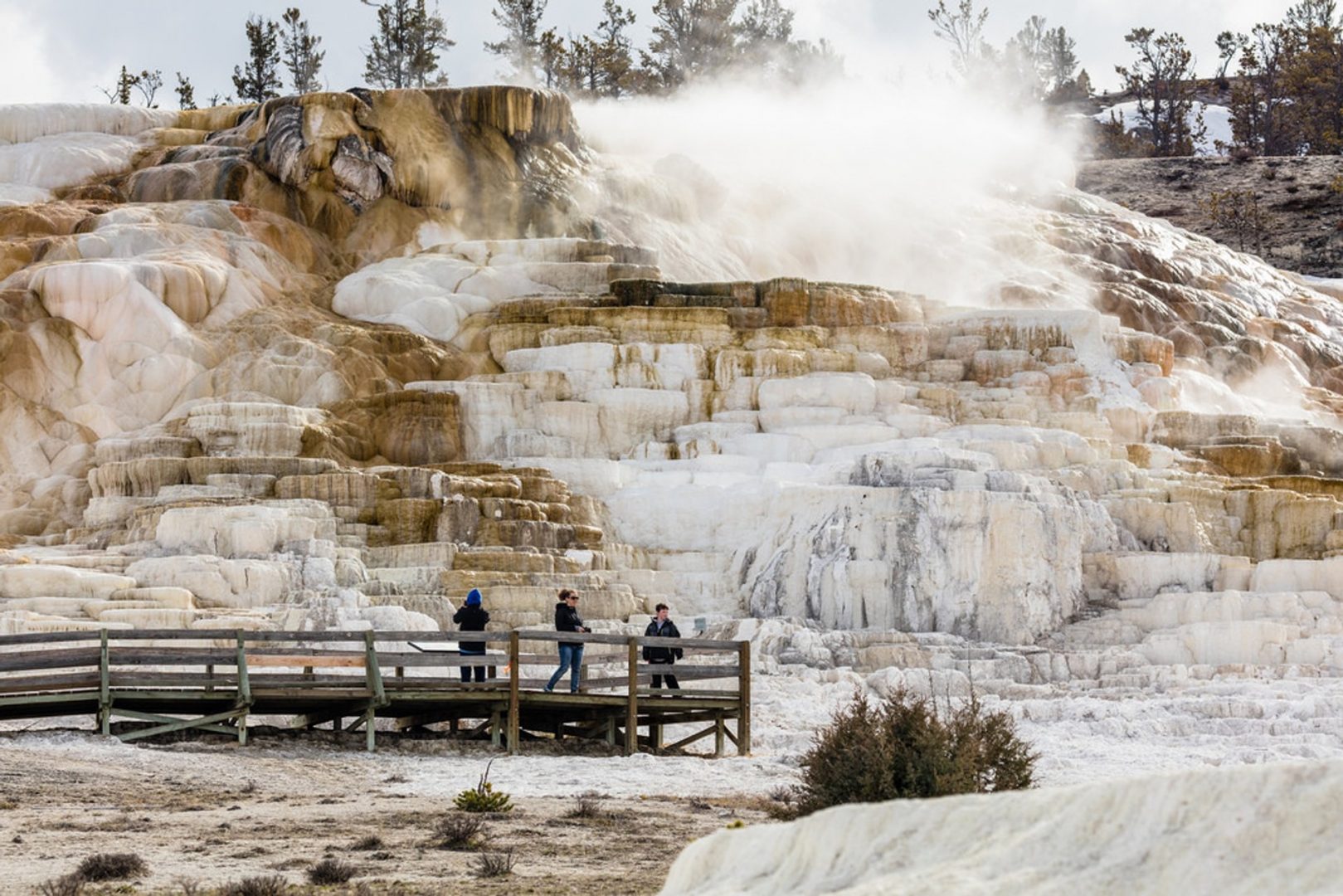
Mammoth Hot Springs is a large complex of hot springs on a hill of travertine in Yellowstone National Park adjacent to Fort Yellowstone and the Mammoth Hot Springs Historic District. It was created over thousands of years as hot water from the spring cooled and deposited calcium carbonate. Because of the huge amount of geothermal vents, travertine flourishes. Although these springs lie outside the caldera boundary, their energy has been attributed to the same magmatic system that fuels other Yellowstone geothermal areas. The hot water that feeds Mammoth comes from Norris Geyser Basin after traveling underground via a fault line that runs through limestone and roughly parallel to the Norris-to-Mammoth road. The limestone from rock formations along the fault is the source of the calcium carbonate. Shallow circulation along this corridor allows Norris’s superheated water to slightly cool before surfacing at Mammoth, generally at about 170 °F. Algae living in the warm pools have tinted the travertine shades of brown, orange, red, and green. Thermal activity here is extensive both over time and distance.
5. Yellowstone Caldera
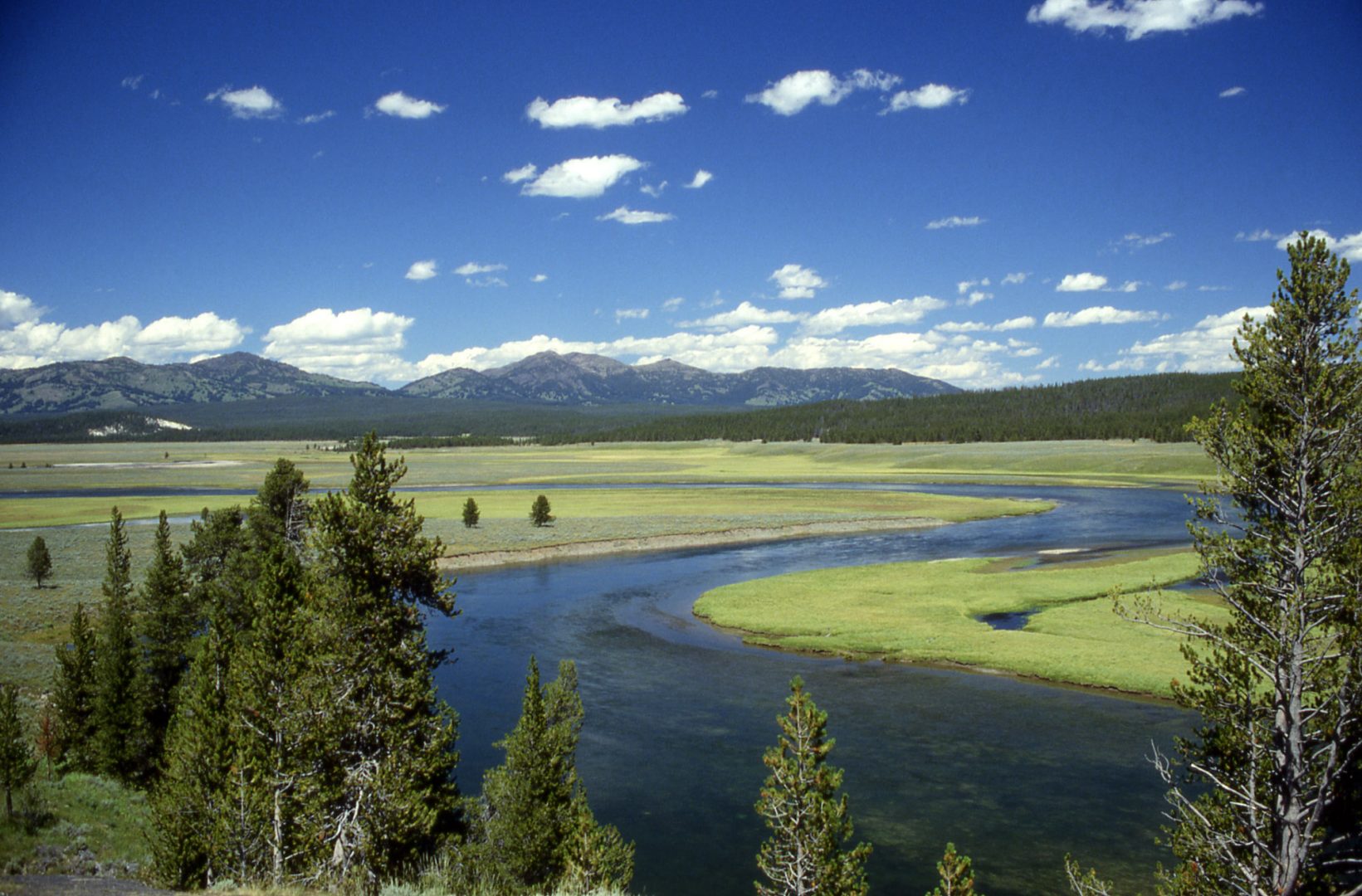
The Yellowstone Caldera is a volcanic caldera and supervolcano in Yellowstone National Park in the Western United States, sometimes referred to as the Yellowstone Supervolcano. The caldera and most of the park is located in the northwest corner of Wyoming. The major features of the caldera measure about 34 by 45 miles. The caldera formed during the last of three supereruptions over the past 2.1 million years: the Huckleberry Ridge eruption 2.1 million years ago; the Mesa Falls eruption 1.3 million years ago; and the Lava Creek eruption approximately 630,000 years ago.
